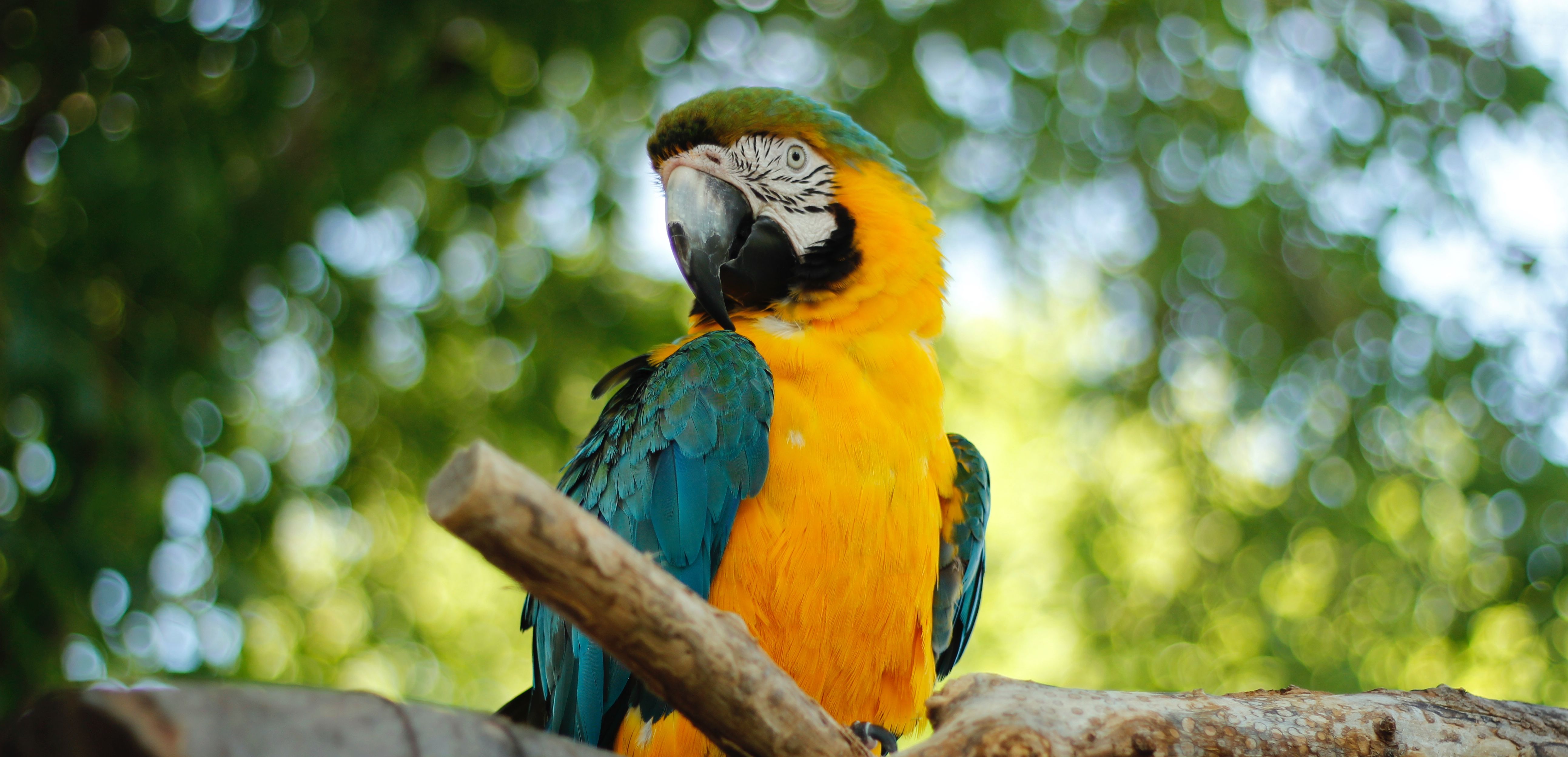Animals
Lincoln Children’s Zoo is home to over 400 animals including giraffes, cheetahs, tigers, giant anteaters, red pandas, Humboldt penguins, ring-tailed lemurs, and Galapagos tortoises. Learn more about each of the animals that live here by exploring the areas below.
*This is not an all inclusive list of the animals at Lincoln Children's Zoo
-
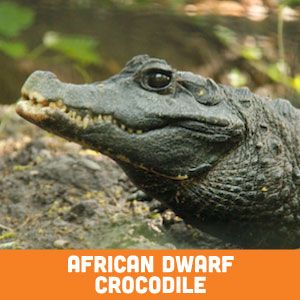
West African Dwarf Crocodile
Osteolaemus tetraspisCONSERVATION STATUS
VulnerableHABITAT
The West African dwarf crocodile is found in freshwater, tropical grassland and tropical rainforest habitats. They prefer slow-moving bodies of water and will dig burrows that often have two passageways near the water’s edge.DIET
IN THE WILD – Fish, frogs and crustaceans
IN THE ZOO – MeatFASCINATING FACTS
• World’s smallest crocodiles
• Live to be 75 years old
• Have taste buds on the roof of their mouth
• Cry to clean their eyes and reduce the growth of bacteria -
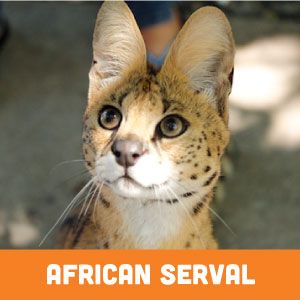
African Serval
Leptailurus servalCONSERVATION STATUS
Least ConcernNATURAL HABITAT
African servals live in savannas.DIET
IN THE WILD – Rodents, insects, reptiles, birds
IN THE ZOO – Text hereFASCINATING FACTS
• Can jump as high as 10 feet and catch birds that fly by
• Also known as a “giraffe cat”
• Young female servals stay with their mother longer than males
• Johnny shows his zookeepers he loves them by bumping his head into them! -
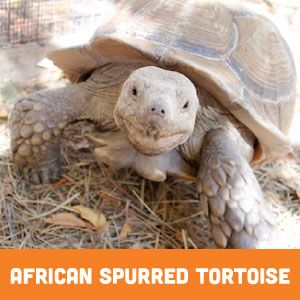
African Spurred Tortoise
Geochelone sulcataCONSERVATION STATUS
VulnerableNATURAL HABITAT
The African spurred tortoise lives in hot arid regions ranging from desert fringes to dry savannahs.DIET
IN THE WILD – Grasses and plants
IN THE ZOO – Greens, hay, vegetables and specially formulated tortoise chowFASCINATING FACTS
• Largest tortoise on the African mainland
• Will dig themselves into the ground to survive extended periods of drought
• Females lay 15 to 30 eggs
• Can be very aggressive, especially during mating season
• Males can be seen ramming into each other in attempts to flip one another over -
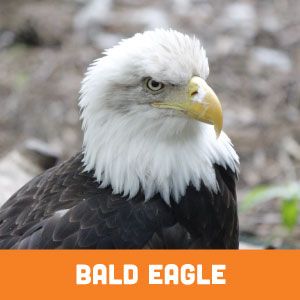
Bald Eagle
Haliaeetus leucocephalusCONSERVATION STATUS
Least ConcernNATURAL HABITAT
The Bald Eagle nests in trees in North America near large bodies of open water where they can find an abundance of fish.DEIT
IN THE WILD – Fish, carrion, small mammals and reptiles
IN THE ZOO – Fish and rodentsFASCINATING FACTS
• Can see up to 1.5 miles
• Can carry eight pounds of food while flying
• Known for building large nests
• Largest recorded nest was 9 feet wide and weighed more than two tons
• The Zoo’s eagles are injured birds that have been rehabilitated and are not able to be released into the wild -
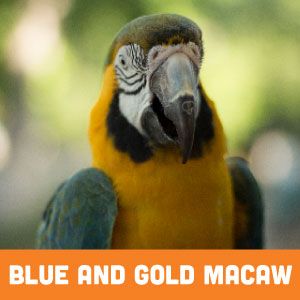
Blue and Gold Macaw
Ara araraunaCONSERVATION STATUS
Least ConcernNATURAL HABITAT
The macaw is found in forests, rainforests, woodlands or savannah-like habitats depending on species.DIET
IN THE WILD – Fruit, nuts and seeds
IN THE ZOO – Nuts, seeds, apples and bananasFASCINATING FACTS
• Males and females look alike
• Mate for life
• 17 different species of macaws
• Use beak as a third foot when climbing
• Can travel up to 35 mph due to wide wingspan and hollow bones -
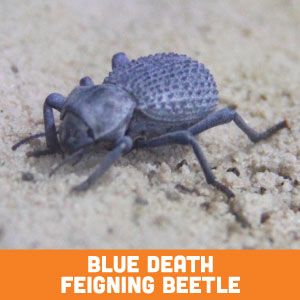
Blue Death Feigning Beetle
Asbolus verrucosusCONSERVATION STATUS
Not EvaluatedNATURAL HABITAT
Blue death feigning beetles live in deserts in Southwestern United States.DIET
IN THE WILD – Lichens and fungi
IN THE ZOO – Text hereFASCINATING FACTS
• Play dead as a defense strategy
• Strong, thick outer shell that is very hard to break
• Shell color comes from excreted wax used to keep cool and hydrated
• Live up to 8 years -
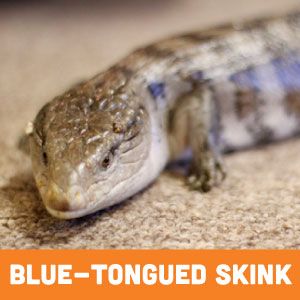
Blue-tongued Skink
Tiliqua scincoidesCONSERVATION STATUS
Least ConcernNATURAL HABITAT
Blue-tongued skinks live in Eastern Australia.DIET
IN THE WILD – Insects, snails, carrion, wildflowers, fruit, berries
IN THE ZOO – Insects, fruitFASCINATING FACTS
• Tail can grow back if it breaks off
• Have blue tongues
• Sticks out tongue and hisses to threaten other animals -
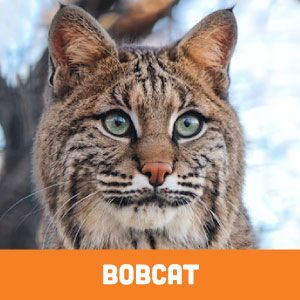
Bobcat
Lynx rufusCONSERVATION STATUS
Least ConcernNATURAL HABITAT
The Bobcat adapts well to diverse habitats and lives in forests, swamps, deserts and urban areas.DIET
IN THE WILD – Rabbits, mice, birds, squirrels and other mammals
IN THE ZOO – MeatFASCINATING FACTS
• Most abundant wildcat in the United States
• Females raise litters of one to six kittens
• Mothers care for kittens until age one
• Stalk and pounce on their prey
• Sometimes hunt mammals that are bigger than them -
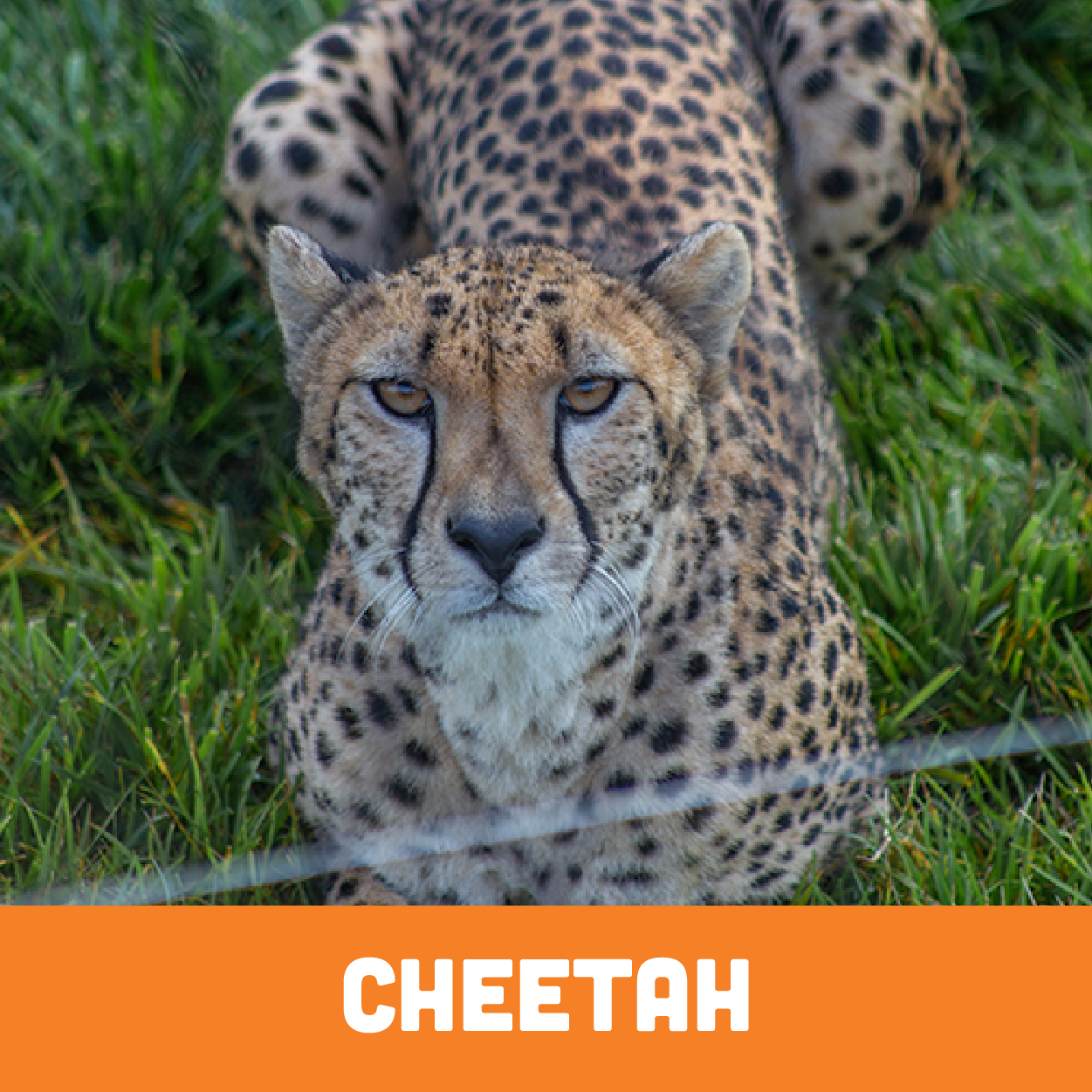
Cheetah
Acinonyx jubatusCONSERVATION
VulnerableNATURAL HABITAT
Found in grasslands, savannas, areas with dense vegetation and mountainous regionsDIET
IN THE WILD – Variety of small antelope, rabbits, warthogs, gazelles and birds
IN THE ZOO – Specialized carnivore diet, whole prey, and bonesFASCINATING FACTS
• Cheetahs are the fastest land mammal in the world, reaching speeds of 70 mph in three seconds, which is faster than the acceleration of a sports car!
• Cheetahs may be fast, but they are only able to maintain that speed for around a minute.
• They are the only big cat that cannot roar but they often purr, especially when close to other cheetahs.
• Cheetahs have built-in sun glare protection that runs from the inside corner of their eyes down to the outside edges of their mouth. This helps them hunt their prey in direct sunlight by reflecting the sun’s glare.
• Their eyesight is exceptional, allowing them to spot their prey over three miles away.
• Cheetahs use their tail to control their steering and keep balance while they are running at top speed.
• They have special semi non-retractable claws that work like football cleats and provide traction while running.
• Their fur is covered in black spots and so is their skin. The black hair grows out of the black spots on their skin. -
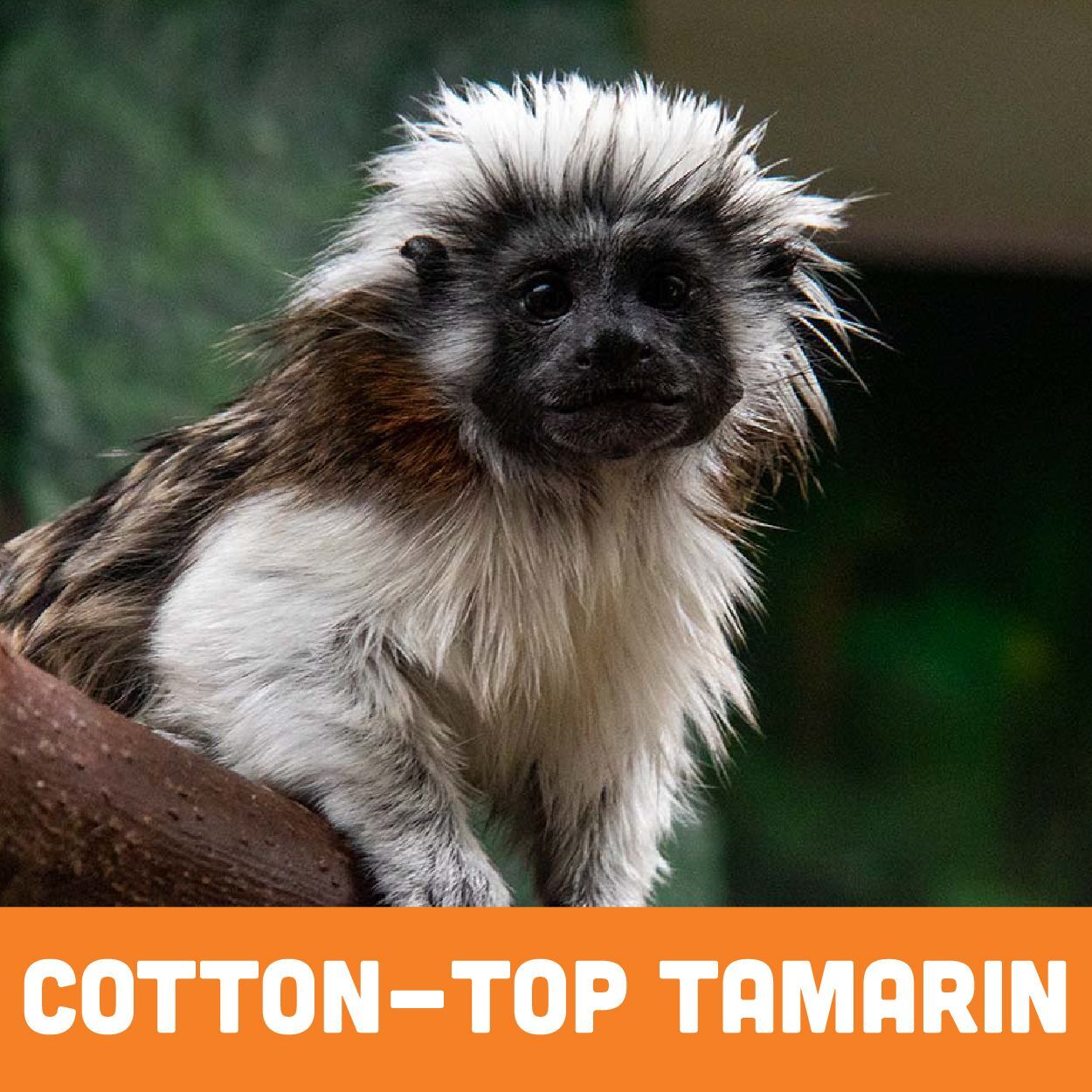
Cotton-top Tamarin
Saguinus oedipusCONSERVATION STATUS
Critically EndangeredNATURAL HABITAT
Cotton top tamarins are found in rainforests and open woodlands of Columbia.DIET
IN THE WILD – Fruit, insects, sap, fallen eggs, nectar, small invertebrates and seeds
IN THE ZOO – Fruit and insectsFASCINATING FACTS
• Live in groups that consist of 2 to 14 tamarins
• Groups are led by the oldest female
• Forage by day and sleep in a tree at night
• While the others sleep, one tamarin stays on guard to protect from predators • Each group member is groomed equally in order to maintain their bond
• Use scent marking to secure their territory -

Cuban Rock Iguana
Cyclura nubileCONSERVATION STATUS
VulnerableNATURAL HABITAT
The Cuban rock iguana is found in coastal regions.DIET
IN THE WILD – Leaves, flowers, fruit, and insects
AT THE ZOO – Fruits, vegetables, and leafy greensFASCINATING FACTS
• Is able to make a 40 foot leap out of the trees and land safely on solid ground
• Can hold its breath under water for 30 minutes
• Uses its strong jaws, razor sharp teeth, and strong tail to protect itself from predators
• One of the world's largest iguanas
• Weigh up to 15 pounds and can grow up to 5 feet in length -

Dromedary Camel
Camelus dromedariusCONSERVATION STATUS
Least ConcernNATURAL HABITAT
The Dromedary camel roams in arid regions.DIET
IN THE WILD – Any vegetation they find
IN THE ZOO – Hay and specially formulated grainFASCINATING FACTS
• Can drink 30 gallons of water in 13 minutes.
• Store fat in their hump, not water.
• Have flat, round feet to keep them from sinking in the sand.
• No longer considered wild animals. In Africa and Arabia they are semi-domesticated animals that have free range, but are under the control of herders. -
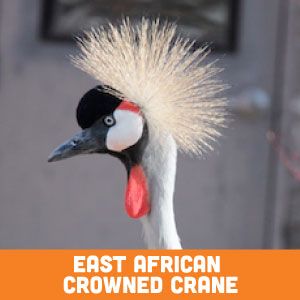
East African Crowned Crane
Balearica regulorumCONSERVATION STATUS
EndangeredNATURAL HABITAT
The East African crowned crane lives in dry savannahs.DIET
IN THE WILD – Plants, seeds, insects, worms, frogs and small fish
IN THE ZOO – Specially formulated grain and insectsFASCINATING FACTS
• The Mohawk on top of their head is actually feathers
• Fossil records indicate crowned cranes lived 37 to 54 million years ago
• Can live up to 50 years
• Only cranes to perch in trees -
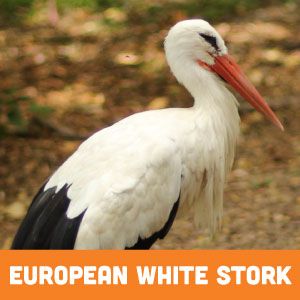
European White Stork
Ciconia ciconiaCONSERVATION STATUS
Least ConcernNATURAL HABITAT
The European white stork prefers open lands without tall trees or thick vegetation, usually in or near wetlands.DIET
IN THE WILD – Insects, worms, frogs, fish, lizards, snakes and small rodents
IN THE ZOO – Fish, meat and specially formulated grainFASCINATING FACTS
• Build large nests that can reach lengths of more than 7-feet across
• Can eat up to 60 percent of body weight per day
• Fly by soaring on warm air currents, with long, broad wings that flap occasionally
• Nest on roofs and chimneys of houses in the spring -
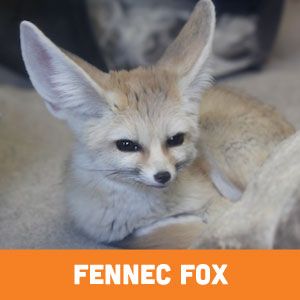
Fennec Fox
Vulpes zerdaCONSERVATION STATUS
Least ConcernNATURAL HABITAT
The fennec fox lives in the dry sandy regions of the African Sahara desert.DIET
IN THE WILD – Fruits, insects, plants, eggs and small rodents
IN THE ZOO – Fruits, insects, rodents and canine dietFASCINATING FACTS
• World's smallest species of fox
• Large ears dissipate heat to keep them cool
• Hearing is so sensitive, they can hear prey moving underground
• Hairy feet protects them against hot desert sand
• Only weigh 2 to 3 pounds
Conservation
Lincoln Children’s Zoo is committed to animal conservation efforts and saving animals from extinction. Home to over 30 endangered animals, the Zoo strives to provide the highest-quality care to these near extinct species. Lincoln Children’s Zoo partners with organizations throughout the world that manage captive animals and wild animals with a goal to create a plan to ensure endangered animals are saved and protected for future generations.
The Zoo is part of the Association of Zoos & Aquarium’s Species Survival Plan, which oversees the management of select species with the goal of enhancing conservation in the wild. Species Survival Plan is led by expert advisors who work together to manage the demographic distribution and long-term sustainability of nearly 500 species.
Photo Ark Collaboration
Lincoln Children’s Zoo collaborates with National Geographic photographer Joel Sartore and his Photo Ark project. The Photo Ark is a groundbreaking effort to document species before they disappear and to get people to care while there’s still time. The Photo Ark started at Lincoln Children’s Zoo with the first photograph taken of a naked mole rat. To date the Photo Ark has documented 10,531 species. Find out more about Joel Sartore’s Photo Ark here.

